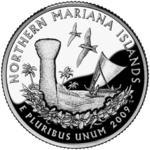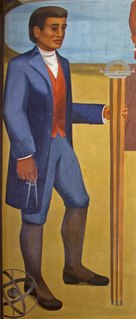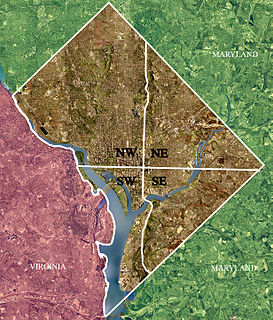| United States | |
| Value | 0.25 U.S. Dollar |
|---|---|
| Mass | 6.25(Ag); 5.67 (Cu-Ni) g |
| Diameter | 24.26 mm (0.955 in) |
| Thickness | 1.75 mm (0.069 in) |
| Edge | 119 reeds |
| Composition | 91.67% Cu 8.33% Ni (standard) 90% Ag 10% Cu (proof only) |
| Years of minting | 2009 |
| Mint marks | P, D, S (proof only) |
| Obverse | |
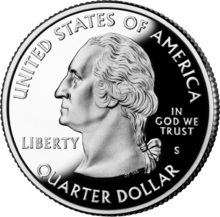 | |
| Design | George Washington |
| Designer | John Flanagan (1932 version) from a 1786 bust by Houdon / William Cousins (modification to Flanagan's design) |
| Design date | 1999 |
| Reverse | |
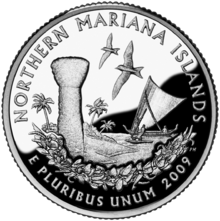 | |
| Design | various; six designs |
| Designer | various |
| Design date | 2009 |
The District of Columbia and United States Territories Quarter Program was a one-year coin program of the United States Mint that saw quarters being minted in 2009 [1] to honor the District of Columbia and the unincorporated United States insular areas of Puerto Rico, Guam, the United States Virgin Islands, American Samoa, and the Northern Mariana Islands. The islands commonly grouped together as the United States Minor Outlying Islands were not featured, as the law defined the word "territory" as being limited to the areas mentioned above. [2] It followed the completion of the 50 State Quarters program. The coins used the same George Washington obverse as with the quarters of the previous 10 years. The reverse of the quarters featured a design selected by the Mint depicting the federal district and each territory. Unlike on the 50 State quarters, the motto "E Pluribus Unum" preceded and was the same size as the mint date on the reverse.

The United States Mint is a unit of the Department of Treasury responsible for producing coinage for the United States to conduct its trade and commerce, as well as controlling the movement of bullion. It does not produce paper money; that responsibility belongs to the Bureau of Engraving and Printing. The Mint was created in Philadelphia in 1792, and soon joined by other centers, whose coins were identified by their own mint marks. There are currently four active coin-producing mints: Philadelphia, Denver, San Francisco, and West Point.

The quarter, short for quarter dollar, is a United States coin worth 25 cents, one-fourth of a dollar. It has a diameter of .955 inch (24.26 mm) and a thickness of .069 inch (1.75 mm). The coin sports the profile of George Washington on its obverse, and its reverse design has changed frequently. It has been produced on and off since 1796 and consistently since 1831.

Puerto Rico, officially the Commonwealth of Puerto Rico and briefly called Porto Rico, is an unincorporated territory of the United States located in the northeast Caribbean Sea, approximately 1,000 miles (1,600 km) southeast of Miami, Florida.










